For the last couple of generations, AMD has been striving to compete with Nvidia at the high end. However, with the AMD Radeon RX 9070 XT, Team Red has shifted its focus from the ultra-high-end RTX 5090 to delivering the best graphics card for the majority of gamers – a goal it absolutely achieves.
The AMD Radeon RX 9070 XT, priced at $599, goes head-to-head with the $749 GeForce RTX 5070 Ti, positioning it as one of the top GPUs on the market today. AMD enhances its appeal with FSR 4, introducing AI upscaling to an AMD graphics card for the first time. This makes the RX 9070 XT the ideal choice for 4K gaming, especially for those not willing to spend $1,999 on the RTX 5090.
Purchasing Guide
----------------The AMD Radeon RX 9070 XT will be available starting March 6, with a starting price of $599. Be aware that prices may vary due to third-party cards, which might be priced higher. Aim to purchase one under $699 for the best value.
AMD Radeon RX 9070 XT – Photos
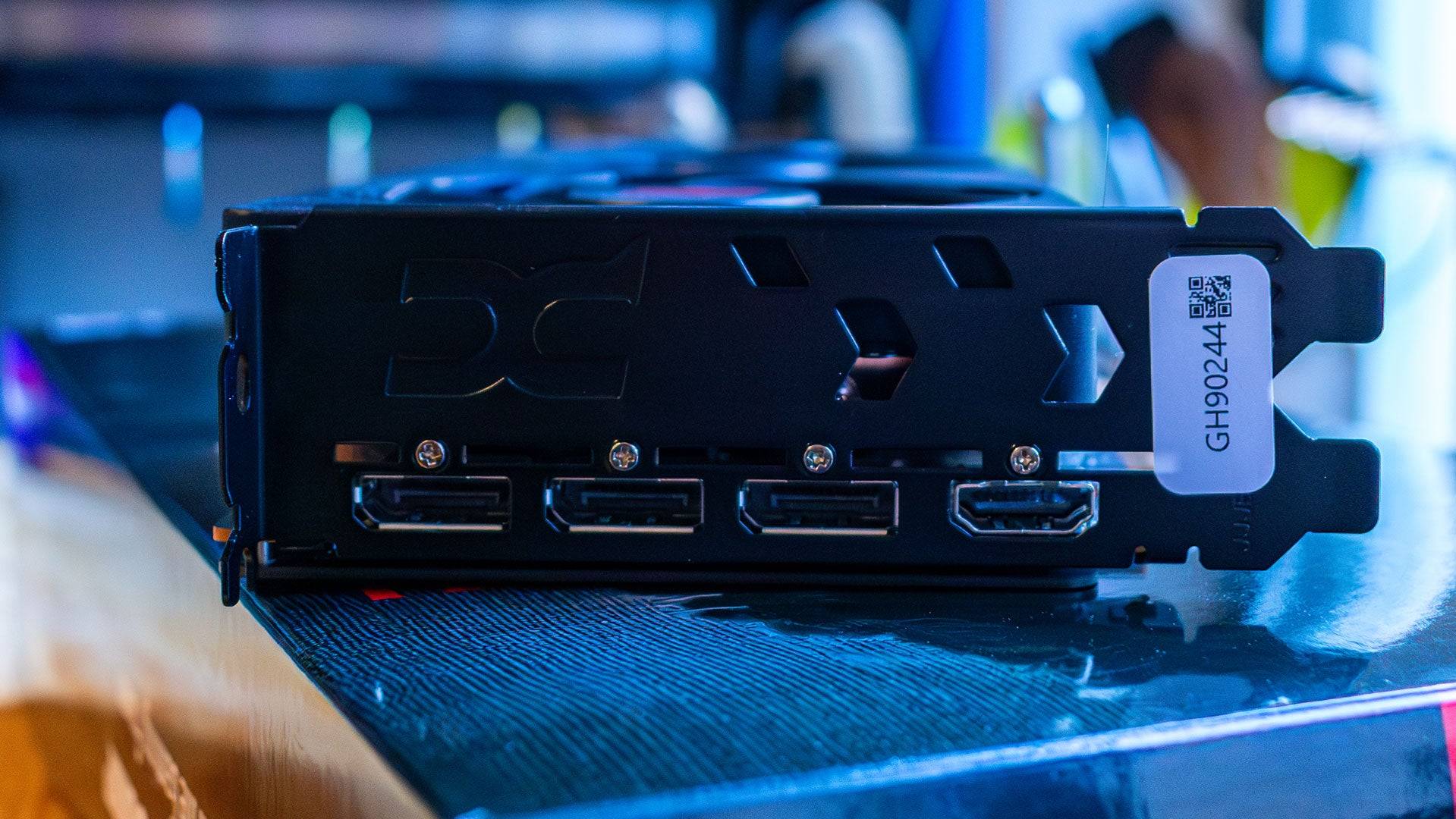
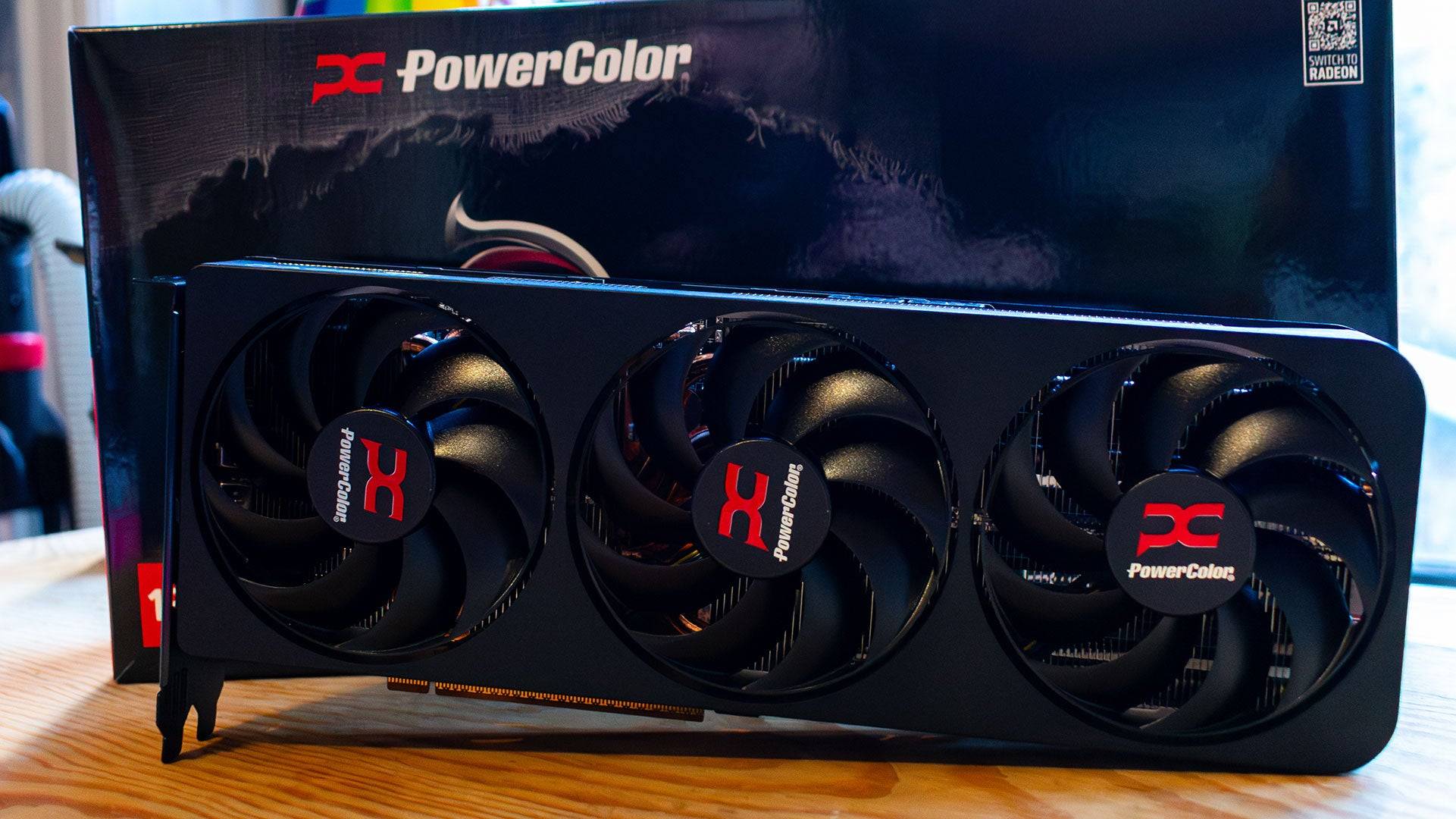 4 Images
4 Images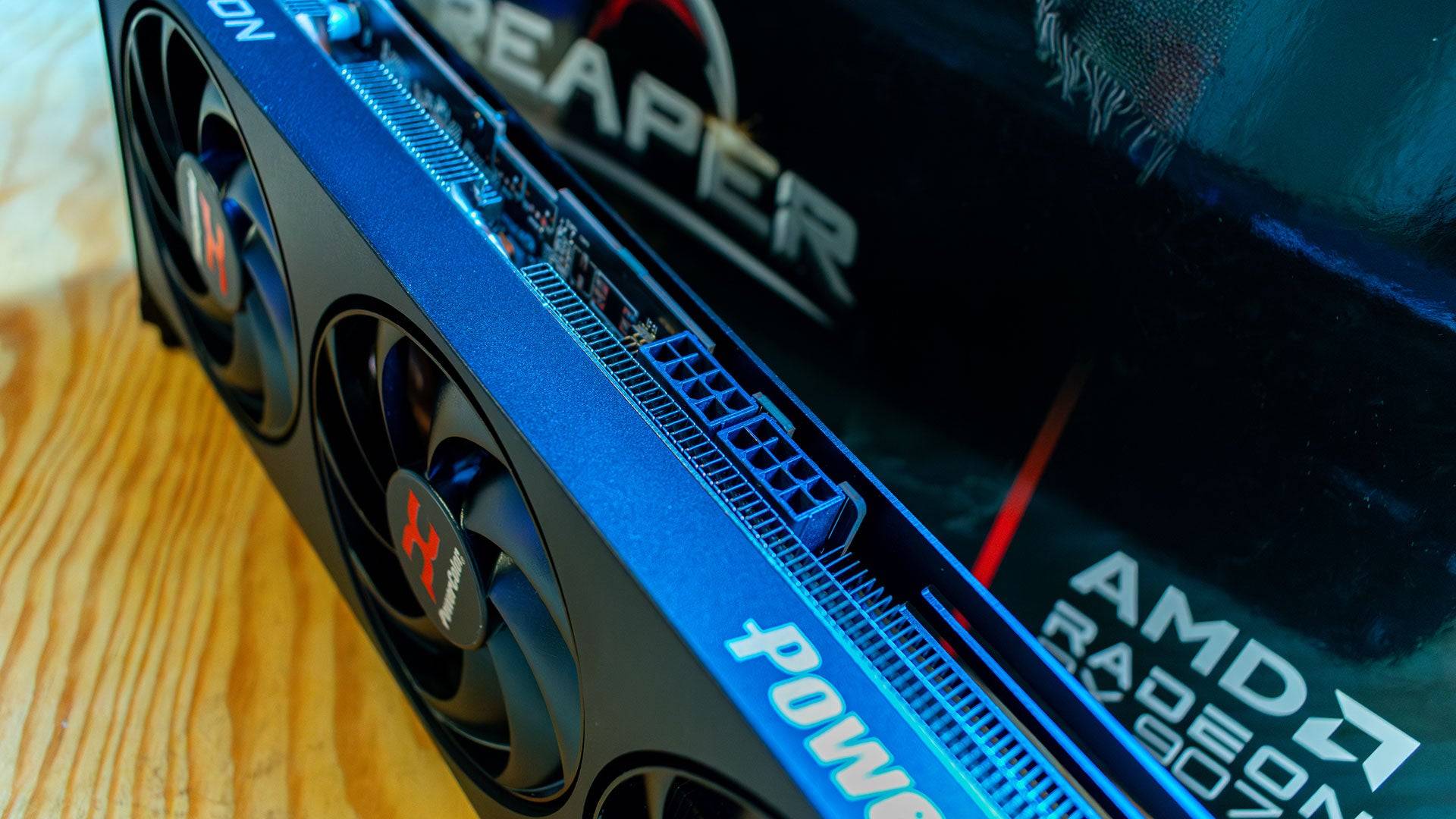
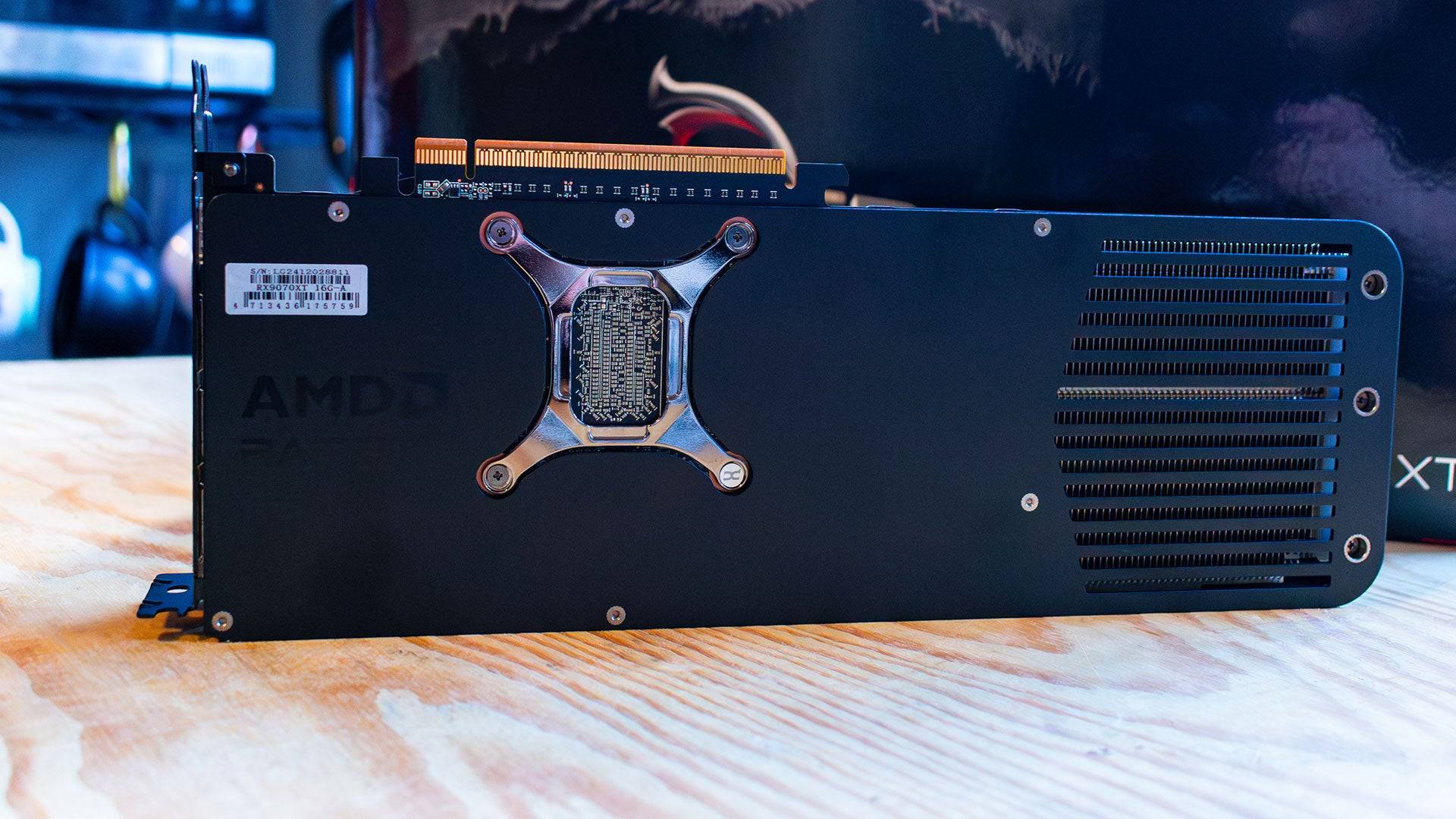
Specs and Features
------------------Built on the RDNA 4 architecture, the AMD Radeon RX 9070 XT brings significant improvements to its shader cores, but the real highlights are the new RT and AI Accelerators. The AI Accelerators power FidelityFX Super Resolution 4 (FSR 4), marking the debut of AI upscaling on AMD graphics cards. While FSR 4 may not boost framerates over FSR 3.1, it significantly enhances image quality. For those prioritizing framerates, the Adrenalin software offers a toggle to disable FSR 4.
AMD has also optimized its shader cores, achieving better performance per core. Despite having fewer Compute Units (64) than the previous Radeon RX 7900 XT (84), the RX 9070 XT delivers a substantial generational leap at a lower launch price. Each Compute Unit contains 64 Streaming Multiprocessors (SMs), totaling 4,096, along with 64 ray accelerators and 128 AI accelerators.
However, the RX 9070 XT has less memory than its predecessor, with 16GB of GDDR6 on a 256-bit bus compared to 20GB on a 320-bit bus. This reduction affects both capacity and bandwidth, but it remains sufficient for most 4K gaming needs. The new architecture is more efficient, yet the RX 9070 XT requires a slightly higher power budget of 304W compared to the 7900 XT's 300W.
Cooling the RX 9070 XT is manageable, with a standard power budget for modern graphics cards. Notably, AMD has not released a reference design for the RX 9070 XT, leaving third-party manufacturers to produce the GPU. The Powercolor Radeon RX 9070 XT Reaper, with its compact triple-fan design, maintained a temperature of 72°C during testing.
The RX 9070 XT uses standard power connectors, requiring two 8-pin PCI-E connectors, and comes with three DisplayPort 2.1a and one HDMI 2.1b port. While a USB-C port would add flexibility, the current configuration meets modern expectations.
FSR 4
-----For years, AMD has sought an AI upscaling solution to rival DLSS. The Radeon RX 9070 XT introduces FSR 4, which uses AI accelerators to analyze previous frames and game engine data for accurate upscaling. While FSR 4 improves image quality over FSR 3, it does come with a performance hit.
In Call of Duty: Black Ops 6 at 4K Extreme settings, the RX 9070 XT achieved 134 fps with FSR 3.1 set to "Performance," but this dropped to 121 fps with FSR 4, a 10% performance loss. Similarly, in Monster Hunter Wilds, the RX 9070 XT managed 94 fps at 4K max settings with FSR 3 and ray tracing, but this fell to 78 fps with FSR 4, a 20% drop. Despite the performance hit, FSR 4's improved image quality may be worth it for single-player games where visuals are paramount.
FSR 3.1 remains available, and FSR 4 is an opt-in feature that can be toggled off in the Adrenalin software, which was disabled by default on the review sample due to early drivers.
AMD Radeon RX 9070 XT & 9070 – Benchmarks
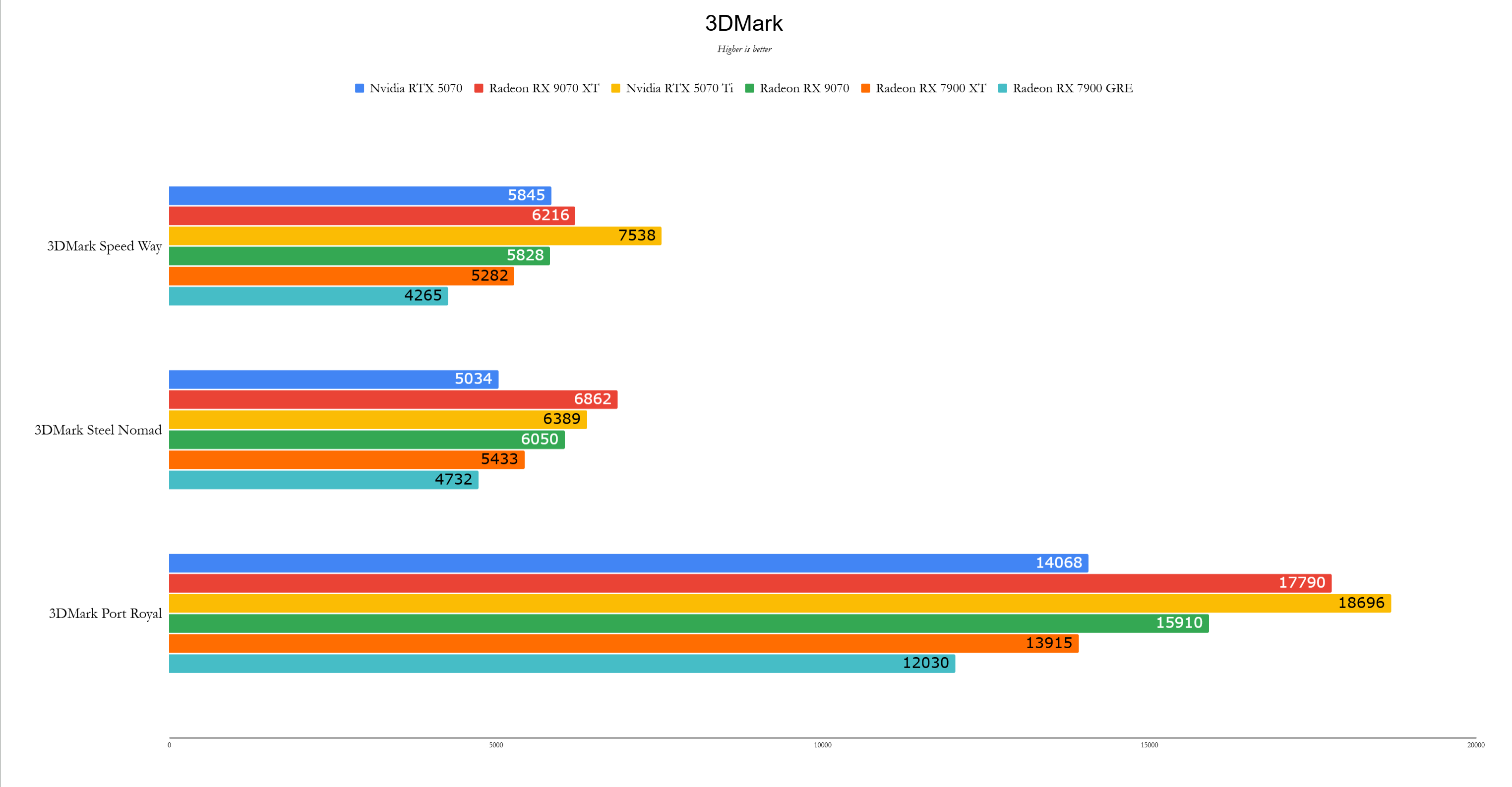
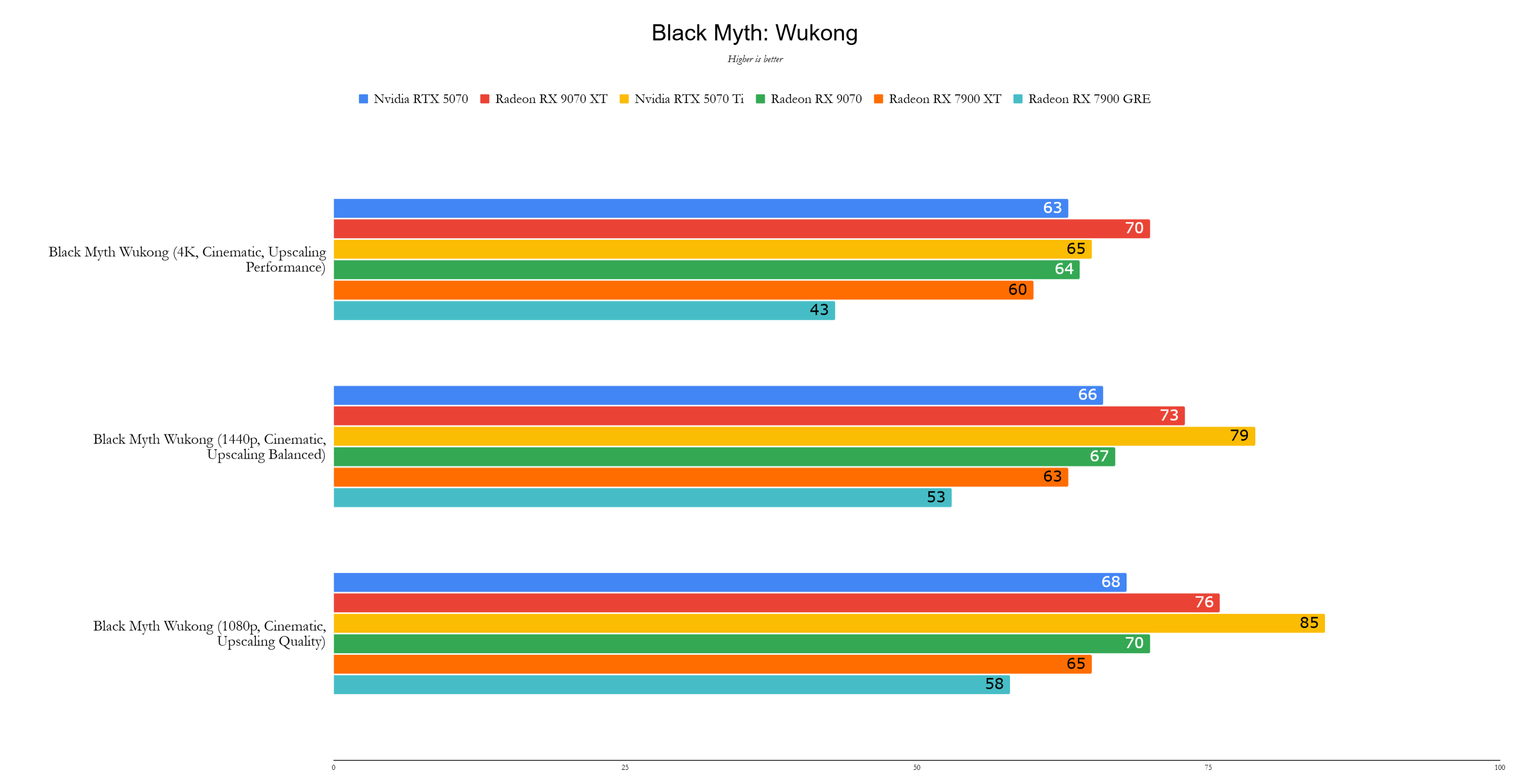 11 Images
11 Images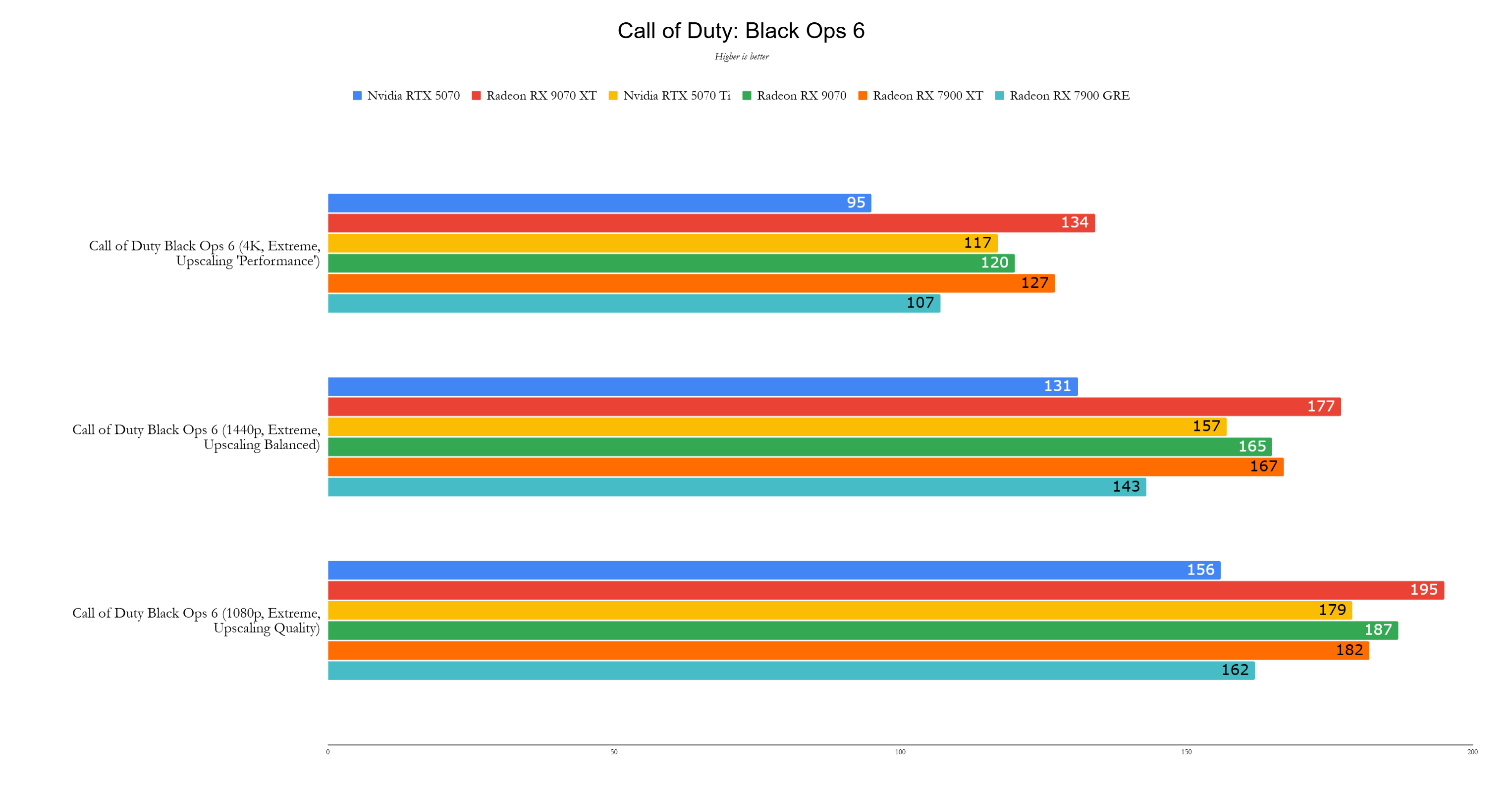
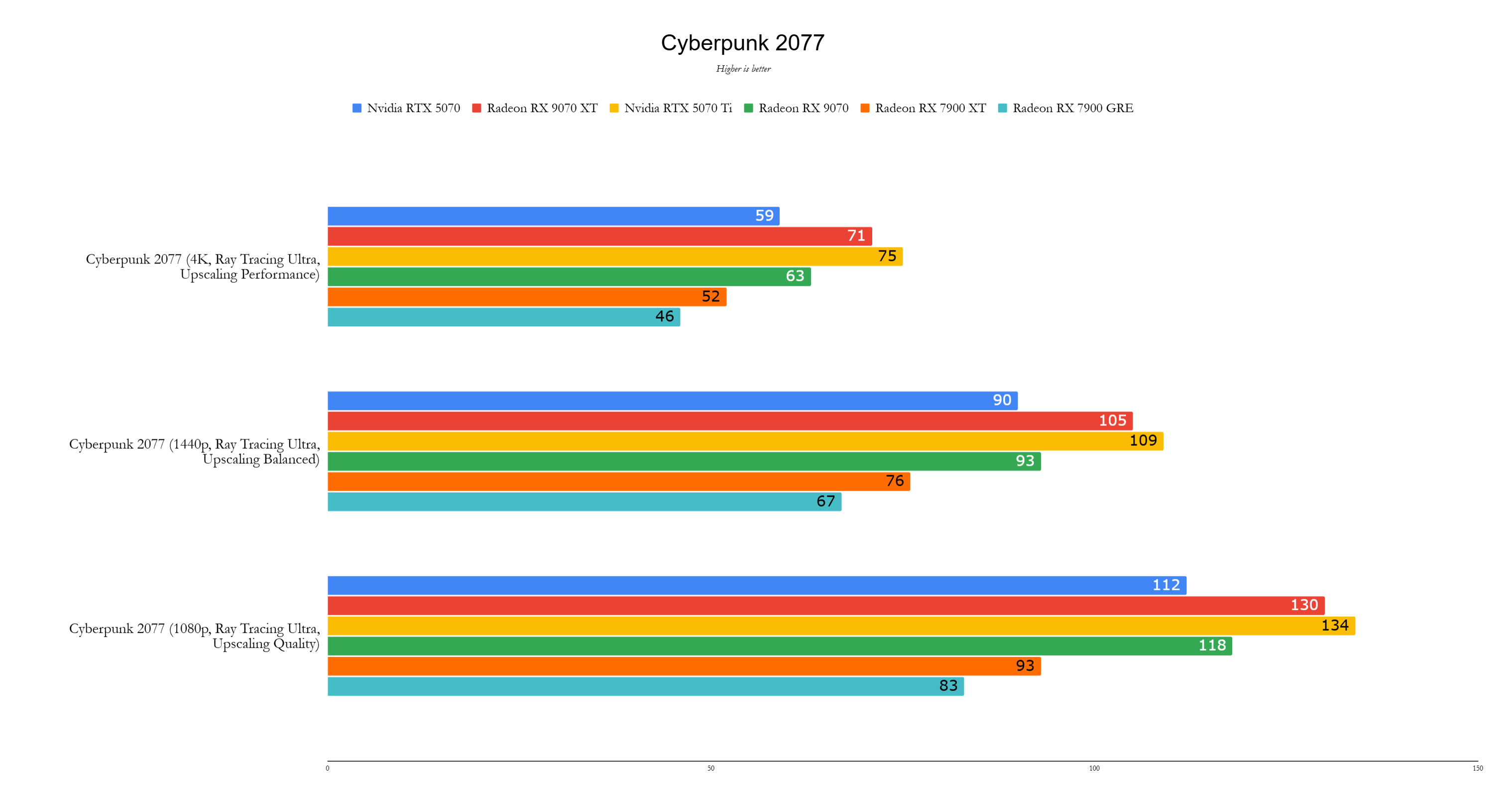
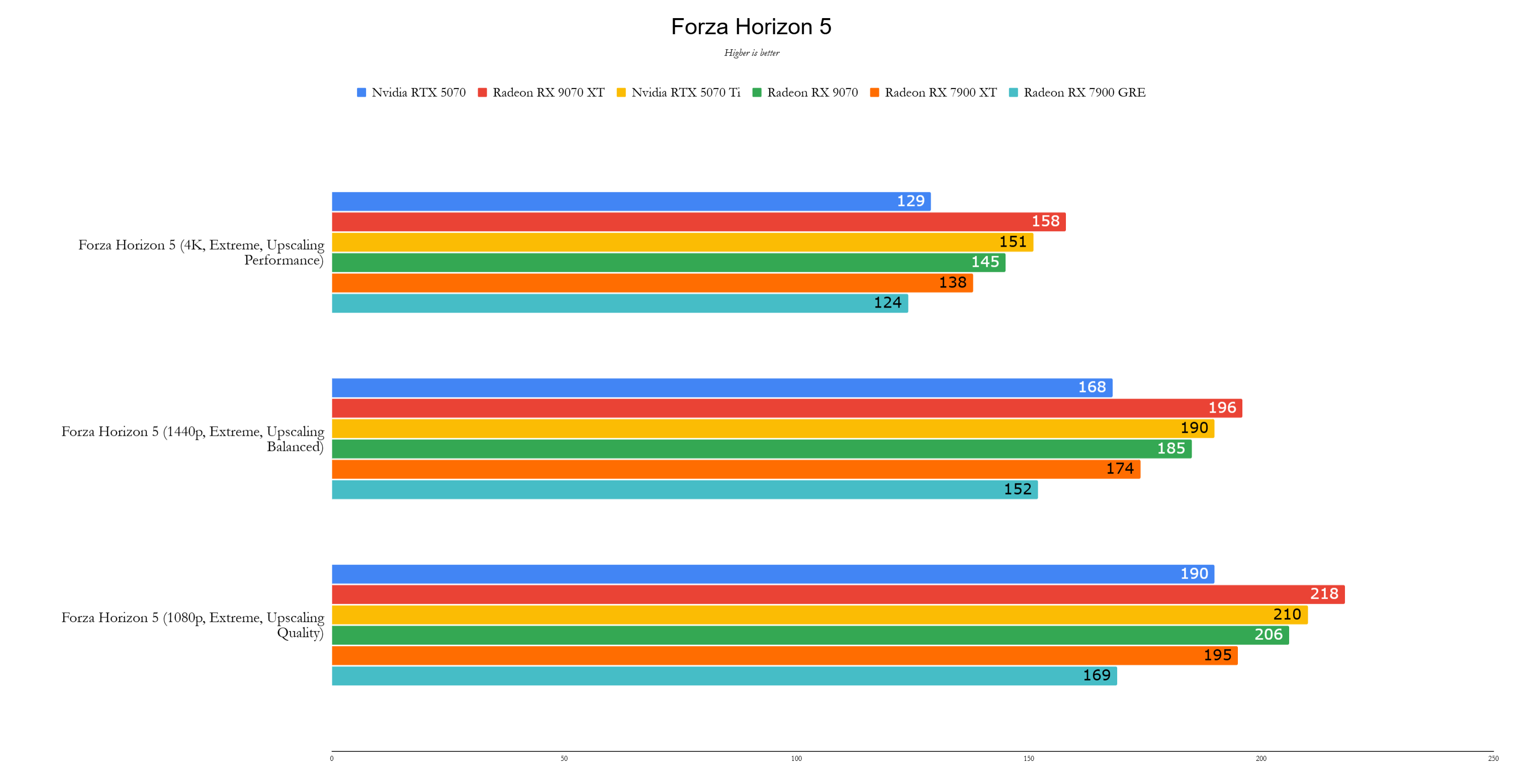
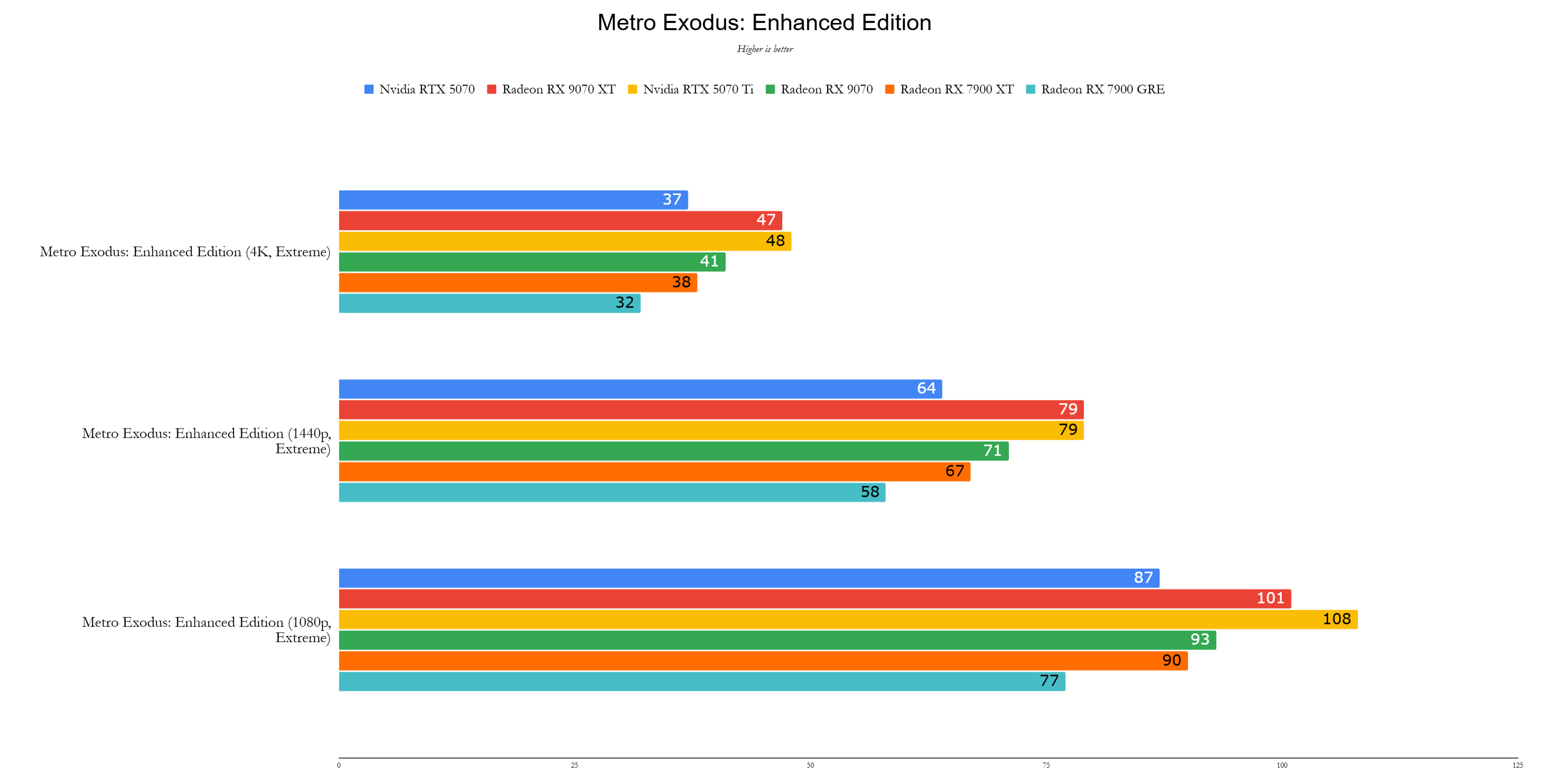
Performance
-----------AMD has delivered a strong contender with the Radeon RX 9070 XT. Priced at $599, it undercuts the Nvidia GeForce RTX 5070 Ti by 21% while being, on average, 2% faster. Although the RTX 5070 Ti outperforms the RX 9070 XT in some games, their competitive performance is a significant achievement for AMD.
Across the test suite, the RX 9070 XT was about 17% faster than the RX 7900 XT, which launched at $899 two years ago, and 2% faster than the new $749 RTX 5070 Ti. The RX 9070 XT excels at 4K, maintaining its lead even with ray tracing enabled, making it an excellent entry-level 4K graphics card.
All graphics cards were tested with the latest drivers available. Nvidia cards used Game Ready Driver 572.60, except for the RTX 5070, which used review drivers. AMD cards were tested on Adrenalin 24.12.1, except for the RX 9070 XT and RX 9070, which used pre-release drivers provided by AMD.
While 3DMark isn't a playable game, it provides a good comparison of graphics card potential. The RX 9070 XT outperformed the 7900 XT by 18% in Speed Way but was 18% behind the RTX 5070 Ti. In the Steel Nomad benchmark, the RX 9070 XT's performance increased to 26% over the 7900 XT and even surpassed the RTX 5070 Ti by 7%.
The test system used included an AMD Ryzen 7 9800X3D CPU, Asus ROG Crosshair X870E Hero motherboard, 32GB G.Skill Trident Z5 Neo RAM at 6,000MHz, a 4TB Samsung 990 Pro SSD, and an Asus ROG Ryujin III 360 CPU cooler.
In Call of Duty: Black Ops 6, the RX 9070 XT led the RTX 5070 Ti by 15%, while in Cyberpunk 2077, the RTX 5070 Ti had a slight 5% advantage. In Metro Exodus, the RX 9070 XT and RTX 5070 Ti were nearly identical, with the RX 9070 XT achieving 47 fps compared to the RTX 5070 Ti's 48 fps. Red Dead Redemption 2 showcased the RX 9070 XT's Vulkan performance, achieving 125 fps compared to the RTX 5070 Ti's 110 fps.
In Total War: Warhammer 3, the RX 9070 XT fell 13% behind the RTX 5070 Ti, while in Assassin's Creed Mirage, it outperformed the RTX 5070 Ti by 12%. The RX 9070 XT also led in Black Myth Wukong by 8% and in Forza Horizon 5 by 5%.
Announced quietly at CES 2025, the Radeon RX 9070 XT feels like AMD's strategic move against Nvidia's Blackwell graphics cards. At $599, it represents a return to a more reasonable pricing for the graphics card market. While not as fast as the RTX 5080 or RTX 5090, the RX 9070 XT offers a compelling flagship option for gamers, reminiscent of the GTX 1080 Ti's value when it launched at $699 in 2017.









